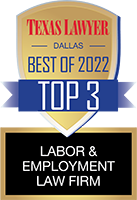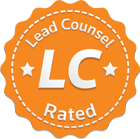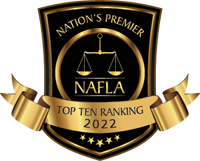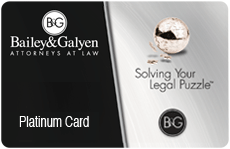Which can you file?
Which is right for you, and your family?
Don’t wait to find out!
When I consult with prospective debtors, individuals and families seeking debt relief by way of bankruptcy, I always explain the distinctions, benefits, and advantages of both Chapter 7 and Chapter 13 bankruptcies. They are vastly different.
Whether a Chapter 7 or Chapter 13 bankruptcy is the proper course for a prospective debtor is always contingent upon the debtor’s gross income, quantity and value of assets both real and personal, the debtor’s creditor obligations or total and type of debt, whether secured or unsecured, and whether the debtor can fund those obligations.
Chapter 7 Bankruptcy
A bankruptcy under Chapter 7 is for the purpose of entirely discharging unsecured consumer debt such as credit card debt, medical bills and, for example, unsecured signature loans.
You must have very little income to qualify for a Chapter 7. Many debtors I see who qualify for Chapter 7 include Social Security and Disability recipients, individuals whose sole income is from Social Security, for example, and who have very few assets of any kind. A higher income will preclude you from being able to discharge debts in Chapter 7, but may require you to seek bankruptcy through a Chapter 13. Indeed, as a general rule, Chapter 7 is for low income individuals.
Additionally, while Chapter 7 affords a debtor protection under the Bankruptcy Code, a debtor should be current on any auto loan and mortgage payments, for example, or those secured creditors can seek to repossess or foreclose regardless of a debtor filing under Chapter 7.
One of the most common issues about which I consult debtors is whether Chapter 7 will permanently stop a foreclosure or auto repossession. It may temporarily delay the foreclosure or repossession; but unless you can repay the arrears immediately, then the lender can seek to foreclose or repossess. If these issues are those leading you to consider bankruptcy, then it is more advantageous to file a Chapter 13 to permanently prevent foreclosure or repossession, and allow you time to repay the arrears. You will need to be able to fund a Chapter 13 repayment plan for any arrears AND continue to make direct payments to your auto and home lenders as the payments continue to come due on an auto loan or mortgage.
Chapter 13 Bankruptcy
While Chapter 7 can generally provide a discharge of unsecured debt, Chapter 13 is quite different. It should be seen as a reorganization of your debts, including unsecured debts, or as a repayment plan based on a consolidation of your total debt.
As with a Chapter 7, a Chapter 13 is also based on a debtor’s gross income, quantity and value of assets both real and personal, the debtor’s creditor obligations or total and type of debt, whether secured or unsecured, and whether the debtor can fund those obligations.
Chapter 13 is typically for higher income individuals who do not qualify for a Chapter 7. The advantages of a Chapter 13 bankruptcy are often greater. A Chapter 13 bankruptcy, as mentioned previously, can stop a foreclosure or auto repossession, an IRS levy, and even wage garnishment! It allows you to consolidate your debts, and pay out pre-petition arrears over time, usually between 36 or 60 months! You also are allowed to maintain your assets while you pay back your debts on a monthly basis. While in a Chapter 13, you would make a monthly payment to a Trustee. At the end of your payment plan, some or all of your unsecured debt may be discharged depending on your income.
In conclusion, it is absolutely imperative that regardless of whether you qualify for a Chapter 7 or 13, you do not wait to address your financial distress at the last minute. Either filing under Chapter 7 or 13 is a time consuming and detailed endeavor which requires an investment of time and analysis into your financial circumstances. Too often, I see prospective debtors who are unable to prevent a foreclosure or repossession, or a tax levy, because they feared addressing these issues. The best thing you can do for yourself and your family is to face these issues timely, and know that bankruptcy relief is designed to help you.
As a friendly reminder, bankruptcy is your right under federal law, as a citizen of the United States of America. The beauty of bankruptcy is the fresh start it intends to provide you, and your loved ones, with options available for debtors who may or may not qualify for one or another type of bankruptcy. It isn’t one size fits all. It is designed to include your specific circumstances, and offers multiple paths to that fresh start!
Don’t wait!








